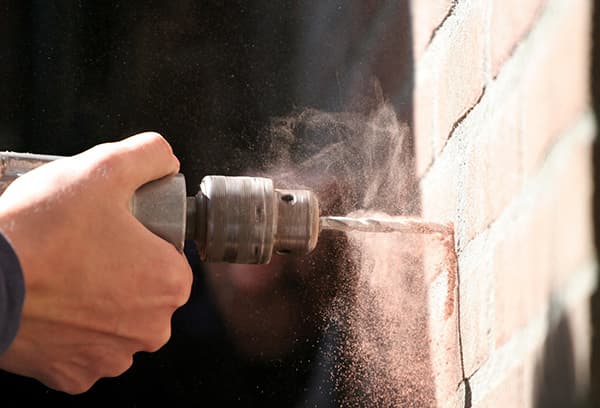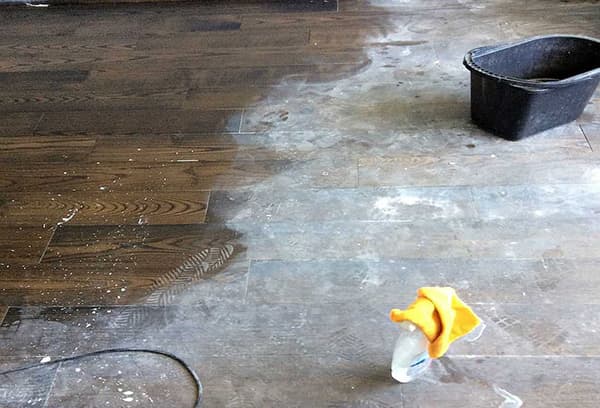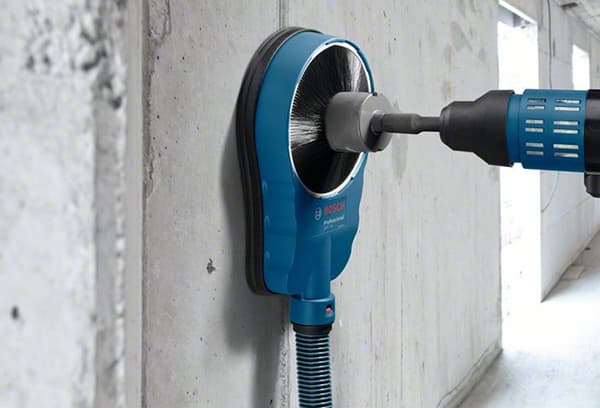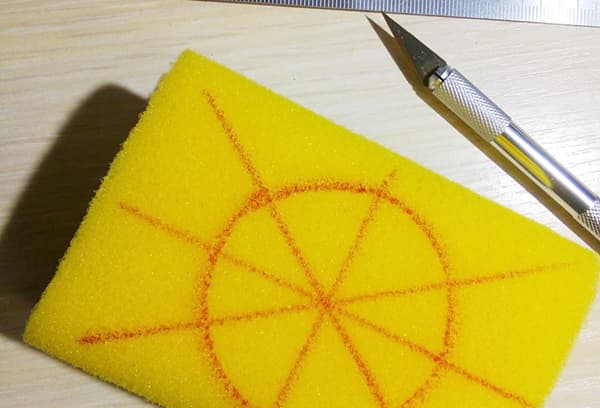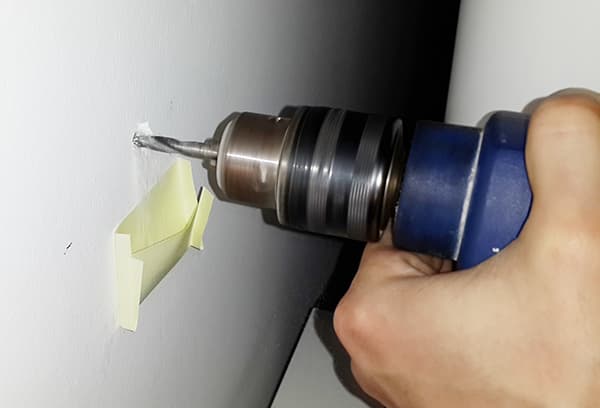How to drill a wall or ceiling so that dust does not fly away?
Content:
Anyone who has at least once drilled holes in solid materials (concrete slab, foam block, brick) knows that in the process of work “flour” (and sometimes even larger particles) is continuously formed, which is poured onto surrounding objects, it can get on clothes in the eyes, nose and mouth. Therefore, many methods have been invented that allow you to drill without dust. Compare some of the most common options and decide which one is better.
Where does the dust come from?
As a rule, solid materials are drilled with a perforator or hammer drill. A drill, drill bit or other tool destroys the material and brings out small particles to the surface. Inside the power tool is a special impeller. While spinning, it drives cold air towards the cartridge, cooling the engine and preventing the mechanism from clogging. However, the air flow at the same time accelerates the dust to the sides, lifting it into the air.
Depending on the nature of the material, the dust will be more or less coarse. Uniformity also differs: particles can have the same size or form several fractions.
Dust generated during drilling is hazardous to health. She is able to powder her eyes, get into the lungs when breathing. To avoid such effects, it is necessary to wear a respirator, safety glasses and a hat when working.
Why fight dust?
Dust is undesirable for many reasons:
- Once in the body, dust causes health problems.
- Particles of cement or brick flour, falling into the gears of the mechanisms, can disable them.
- When mixed with water, cement dust forms dirt that is difficult to wash.
Therefore, it is customary to deal with dust during repairs by all available means. To protect eyes, hair and skin, the builder wears special clothing, goggles, a hat and respiratory protective equipment (respirator or gauze bandage). Furniture and other things that cannot be taken out of the room during the repair are covered with newspapers or polyethylene.
Devices and power tools are produced in dustproof cases. The dust and water protection index (IPxx) will help you determine the degree of dust protection of the device. If the device has the IP5x or IP6x index, it is not afraid of dust entering.
However, all these measures only reduce damage. Radically solve the problem allow devices that collect dust even during its formation.
How do professionals fight dust?
Professional builders have in their arsenal a special tool to combat the resulting flour: a nozzle on a drill or drill, to which a hose is connected from the vacuum cleaner. Such an addition to the punch helps to collect garbage very cleanly, but it has a number of disadvantages:
- You have to spend money to buy a nozzle. Such expenses are appropriate if you have to drill constantly. But if you occasionally have to drill one or two holes in the ceiling or wall, buying a special nozzle is irrational.
- Typically, using a nozzle requires the help of a partner who will hold the vacuum cleaner. In everyday life, to solve the same problems, they use improvised devices made by themselves.
Homemade dust control tools
Improvised appliances sometimes can not boast as complete dust removal as professional nozzles on a vacuum cleaner. But they are much cheaper and often do not require assistance with use.
Nozzle for a drill from a bottle or cup
If you need to drill a hole in the ceiling, crushed concrete will mostly roll down. To collect dust, a combination of a drill or auger with a bottle with a trimmed bottom will help. An ordinary plastic cup is also suitable, but it will need to be cut so that the part of the drill that goes into the wall protrudes above the walls. As a result, the “flour” falling down will fall into the glass, and it will be easy to remove.
Moistened sponge
You can make a nozzle from a sponge:
- the center is measured on it;
- draw a circle with a diameter of about 5 mm in the center;
- foam rubber is cut in a circle with a clerical knife and removed to a solid substrate;
- a hole is made in the substrate into which the drill is inserted;
- Before starting work, moisten the sponge with water.
Like the previous fixture, this option is more effective if you want to drill a ceiling, not a wall.
Paper envelope
An envelope of thick paper is attached to the wall under the place where the hole will be drilled. You can do it yourself by bending the sheet in half and fastening the stapler along the edge. Garbage will be strewed down, gathering in an envelope. Instead of an envelope, you can stick a paper cup.
The main disadvantage of this method is that light dust swelled to the sides is not collected.
We use a vacuum cleaner
You can even use a vacuum cleaner without a special nozzle.
- The easiest option is to draw in the narrowest slit nozzle. It creates a very powerful stream that draws in flour particles well. The disadvantage of this method is that you need an assistant.
- The second option is to build a nozzle from a plank with a drilled hole and a collector attached to it from a cropped bottle. Then the drill is inserted through the holes in the bottle and plate, and the vacuum cleaner is connected to the neck.
We hope that the proposed methods will help you complete all the work associated with drilling, as cleanly as possible, without unnecessary dust and labor.
